Showing 1-20 of 22 results
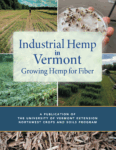
Industrial Hemp In Vermont
While farmers are interested in diversifying crops by growing hemp for fiber, they lack information on the best strategies to grow and process hemp fiber in Vermont, and access new markets. The guide, Industrial Hemp in Vermont, and the videos on this page help close this knowledge gap and overcome barriers for a variety of […]
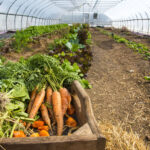
High Tunnel Production Toolkit
The following resources were developed by a team from the University of Vermont and the University of New Hampshire. The full toolkit plus additional resources for producers in Vermont, New Hampshire and Maine are available at the High Tunnel Production Toolkit website.
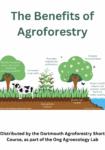
Agroforestry Transition Hub
This video introduces the Agroforestry Transition Hub at Dartmouth College, which focuses on education and on-farm research to promote transitions to agroforestry on farms in the Northeast. The project also created two zines, Common Agroforestry Practices and The Benefits of Agroforestry. Common Agroforestry Practices Zine This zine describes common agroforestry practices and shows their roots […]
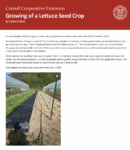
Growing Seed Crops
Northeastern farmers and seed keepers are interested in increasing seed production for on-farm, community, and commercial use. This series of Cornell University fact sheets shares useful production information for a range of vegetable crops. Growing of Lettuce Seed Crop Fact Sheet Basics of Growing Carrots, Beets and Onions for Seed in the Northeast Timing of […]
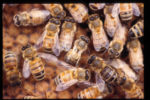
An Introduction to Honey Bee Breeding Program Design
Honey bee breeding is a long-term, labor-intensive process that is becoming more popular and accessible. This 10-page fact sheet from Penn State Extension, An Introduction to Honey Bee Breeding Program Design, introduces beekeepers to the basics of starting a honey bee breeding program.
Adding Value to Locally Grown Products
Farmers often consider adding value to the whole foods produced on their operation as a way to retain a higher percentage of the food dollar on the farm. The fact sheet Adding Value to Locally Grown Products describes how Pennsylvania producers can start and operate a value added enterprise in their farm kitchen or in […]

Guide to interseeding cover crops into corn systems in the Northeast
Although substantial gains in cover crop acreage have been seen across the northeast, proper establishment of cover crops continues to be challenging for dairy operations which rely heavily on corn silage. Farmers are interested in exploring the concept of solar corridors that integrates row crops with solid-seeded cover crops in broad strips. The broad strips […]
How Alive is My Soil?
This guide presents soil testing methods that can be performed in the field by farmers, gardeners, or anyone who desires to understand and appreciate soil from a different perspective. While these tests aren’t intended to be a replacement for sending soil to a lab, they can be considered complementary to annual or biannual lab analysis.
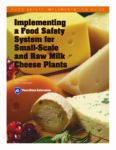
Implementing a Food Safety System for Small-Scale and Raw Milk Cheese Plants
The purpose of this guide is to assist small-scale and raw milk cheesemakers in conducting Hazard Analyses of their processes to ensure they are producing the safest product possible and to meet the requirements of the Food Safety Modernization Act (FSMA). The author, Dr. Kerry E. Kaylegian of the Pennsylvania State University, created this resource […]

Cornell Soil Health Assessment
The Cornell soil health assessment was created to help farmers develop appropriate management solutions to build healthy soils. Focusing on soil health helps improve productivity, reduces the need for external inputs, and increases a farm's resilience to extreme weather events.
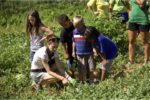
Vermont Food Education Every Day
Includes guides for farmers and food service personnel working to increase local food in schools.
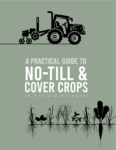
A Practical Guide to No-Till and Cover Crops in the Mid-Atlantic
No-till and cover crops are among the most cost effective tools to reverse soil and carbon loss and improve soil health; the economic, agronomic and environmental benefits of these practices are well known within the farming community. Transitioning from conventional farming to no-till, and incorporating the use of cover crops, requires a higher level of […]
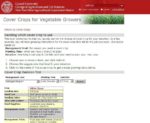
New York Cover Crops Decision Tool
This is an online tool to help you quickly narrow the choices of cover crop for your situation. In a few seconds, you will have growing instructions for the cover crop that will do the job you need. Access the Cover Crops Decision Tool now. It is designed for the soil, climate, cropping practices and […]
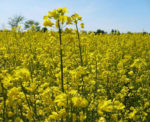
Canola Production for On-Farm Energy
The following production guides, cost calculator and research reports are on canola production, including weed management. They were developed as part of a multi-year research project by University of Vermont Extension on growing sunflowers and canola for on-farm energy. Find research reports on sunflowers here. Production guides Northeast Oilseed Production Manual.pdf 10.18 MB VT Oilseed […]
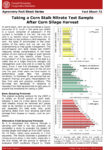
Nutrient Management in Corn Production
The following Cornell University agronomy fact sheets were developed during a 2009 SARE grant to help farmers and educators better evaluate nutrient cycling in corn production, thereby equipping them with information to make improved whole-farm management decisions: Illinois Soil Nitrogen Test for Corn, fact sheet 36 Fine-Tuning Nitrogen Use on Corn, fact sheet 63 Adaptive […]
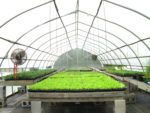
Vegetable Bedding Plants Pest Management
This University of Massachusetts web page has information on integrated pest management (IPM) and organic controls, two practical ways to effectively manage pests on vegetable bedding plants. Vegetable bedding plants are commonly grown in the Northeast as part of the spring sales mix. Although vegetable bedding plants may only be in the greenhouse for a […]
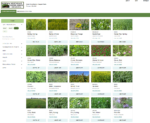
Northeast Cover Crop Decision Support Tool
The Northeast Cover Crops Council (NECCC) has created an online tool designed to support farm decision-making around cover crops. The tool includes a Cover Crop Explorer that provides in-depth information on more than 35 cover crop species. It also has a Species Selector that assists users in selecting individual cover crops based on plant hardiness […]

Crediting Cover Crops and Soil Organic Matter in a Variable Rate Nitrogen Fertilizer Prescription
Crop growth depends on available nitrogen (N) in the soil, much of which comes from mineralization of soil organic matter and other organic residues, such as cover crops. The amount of mineralized N available to a crop depends on several biological and environmental factors such as temperature, moisture, soil texture, the total quantity of organic […]
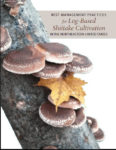
Log-Based Shiitake Cultivation
A 57-page guide to producing these gourmet mushrooms.
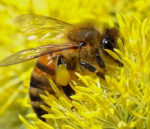
Native bees and flowering cover crops
While managed colonies of European honey bees are most frequently used for crop pollination, wild or native bees commonly provide the same pollination services for ‘free’ without the costs of renting or maintaining honey bee hives.